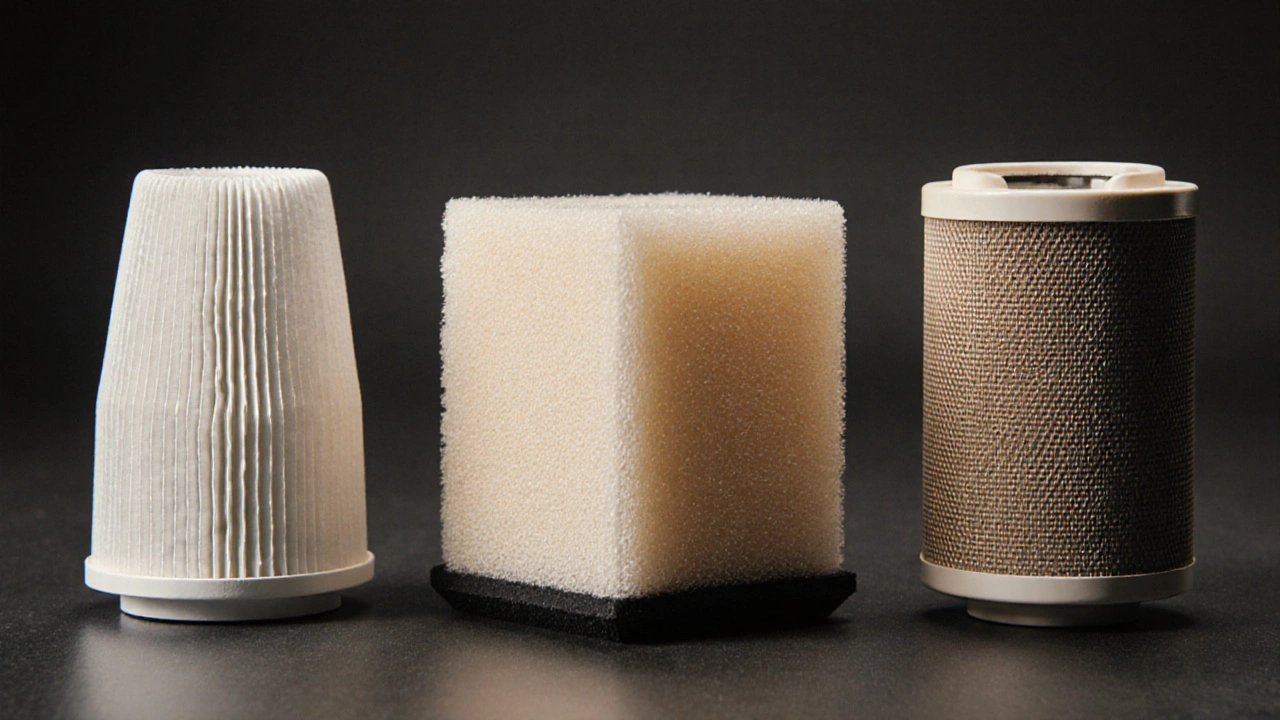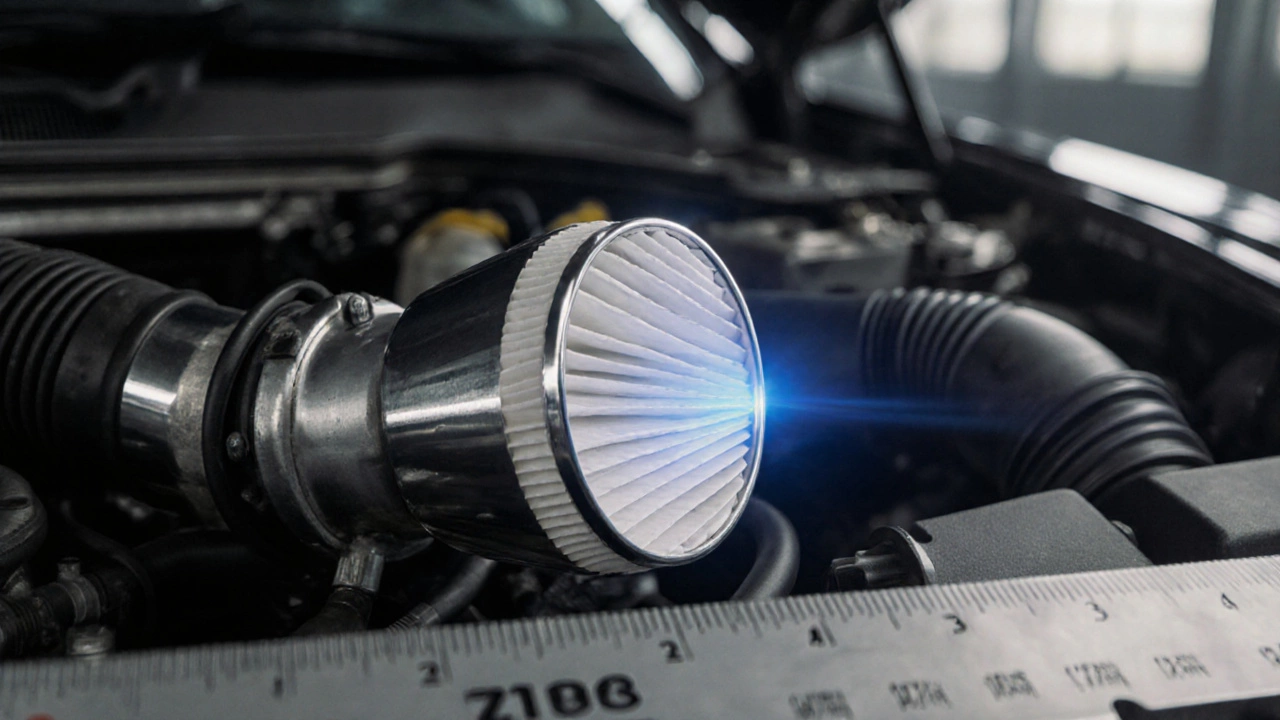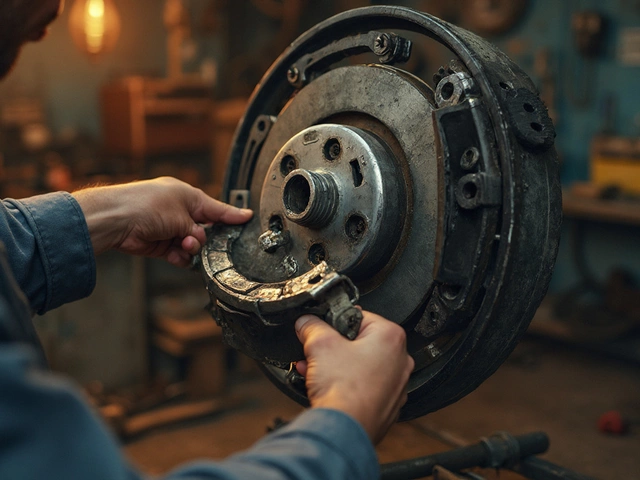Quick Takeaways
- Higher price usually means better airflow, not necessarily better filtration.
- Paper filters are cheap and filter well for daily driving.
- Cotton‑gauze filters excel in high‑performance scenarios but need regular cleaning.
- Match the filter to your driving style; you don’t have to splurge for a commuter.
- Follow a simple maintenance checklist to get the most out of any filter.
Ever stared at a price tag on an air filter and wondered if the extra dollars actually buy better protection for your engine? You’re not alone. A quick glance at online stores shows a expensive air filters can cost three to five times more than a basic paper unit. The gut reaction is to assume the more you spend, the cleaner the air-and the smoother the ride. But the reality is a bit messier. This guide unpacks how air filters work, compares the major types, and tells you exactly when paying a premium makes sense.
Automotive air filter is a component that removes dust, pollen, and other particles from the incoming air before it reaches the combustion chambers. By keeping the air clean, it protects the cylinders, helps the mass airflow sensor (MAF) read accurately, and influences fuel efficiency.
How an Air Filter Keeps Your Engine Healthy
Every time you press the accelerator, the engine draws in a few hundred cubic feet of air per minute. That air carries fine grit, plant fibers, and even microscopic soot. The filter sits right before the intake manifold, acting like a net that catches the big stuff while letting clean air flow through.
The MAF sensor, which measures the volume of incoming air, relies on a consistent flow. If the filter is clogged, the sensor reads lower airflow, the engine computer (ECU) leans out the fuel mix, and you lose power. Conversely, a filter that lets too much dust through can foul pistons and cause premature wear. So the filter must balance two competing goals: high flow and high filtration.
Common Types of Automotive Air Filters
Not all filters are created equal. Below are the three main families you’ll see on shop shelves, each with its own trade‑offs.
Paper air filter is a disposable filter made from pleated cellulose paper treated with oil or synthetic binders. It’s the default choice for most OEMs because it offers good filtration at a low cost.
Synthetic air filter is a reusable filter built from foam or nanofiber media that can be washed and re‑oiled. It sits in the middle of the price spectrum and promises a modest boost in airflow.
Cotton gauze filter is a high‑flow, washable filter made of multiple layers of tightly woven cotton fabric, often used in performance applications. It’s the most expensive option and requires regular cleaning to maintain efficiency.
Key Performance Metrics You Should Know
When you start comparing filters, focus on these measurable attributes rather than the sticker price.
- Flow rate (CFM): How much air can pass through the filter at a given pressure. Higher CFM usually means a slight power gain.
- Filtration efficiency (%): The percentage of particles removed, typically measured at 10‑µm size. Higher efficiency keeps the engine cleaner.
- Pressure drop (in H₂O): The resistance the filter adds to airflow. Too high a drop chokes the engine.
- Lifespan: How long the filter performs before it needs replacement or cleaning.
Manufacturers publish these numbers, but independent tests often tell a more honest story. For example, a 2023 test by *CarTech Review* showed a budget paper filter delivered 180 CFM with 95 % efficiency, while a premium cotton gauze gave 210 CFM but only 88 % efficiency when dirty.

Do Higher Prices Translate to Better Performance?
Short answer: not always. Let’s break it down.
Flow advantage - Premium filters, especially cotton gauze, are designed with larger cell openings. In a dyno test on a 2.0 L turbo engine, the gauze filter added 2.5 % peak horsepower compared to the stock paper unit. That’s modest, but noticeable on a track.
Filtration trade‑off - The same study recorded a 7 % rise in inlet dust when using a dirty gauze filter versus a clean paper filter. Over thousands of miles, that extra grit can accelerate piston ring wear.
Cost‑per‑use - A $30 paper filter lasts about 12 months for an average driver. A $120 cotton gauze filter can be re‑used 5‑6 times if you clean it every 6 000 km, bringing the effective cost down to roughly $20 per use. However, the cleaning process adds labor and the need for proper oiling.
Bottom line: Expensive filters often win on flow, but they may lose a few points on filtration efficiency if you neglect maintenance. If you’re after outright power and you’re willing to clean the filter regularly, the premium price can be justified.
Real‑World Scenarios: When to Splurge and When to Save
Think of your driving habits as the deciding factor.
- Daily commuter (10‑15 km daily) - A standard paper filter provides more than enough protection. The slight power gain from a high‑flow filter won’t be noticeable on city streets.
- Weekend off‑roader - Dusty trails demand robust filtration. A synthetic foam filter that can be rinsed after a mud run offers a good balance of flow and clean‑up.
- Track day enthusiast - The extra horsepower from a cotton gauze filter can shave tenths of a second off lap times. Just remember to clean it between runs.
In each case, the cost difference matters less than matching the filter to the environment.
Maintenance Checklist for Every Filter Type
- Inspect the filter housing for cracks before installation.
- For paper filters, replace every 12 months or when pressure drop feels high.
- For synthetic foam, rinse with low‑pressure water, let dry, then re‑oil lightly.
- For cotton gauze, soak in a dedicated cleaning solution, shake out excess, let air‑dry, then apply a thin coat of high‑temperature oil.
- After cleaning, reinstall the filter with the correct orientation; most filters have an airflow arrow.
- Log the service date; a simple spreadsheet helps you track lifespan.
Following these steps keeps performance high and prevents the filter from becoming a dust collector.

Decision Guide: Choosing the Right Filter for Your Car
| Filter Type | Price | Flow Rating (CFM) | Filtration Efficiency | Typical Lifespan | Best For |
|---|---|---|---|---|---|
| Paper | $15‑$30 | 180‑190 | 94‑96 % | 12 months (or 12 000 km) | Daily commuting |
| Synthetic Foam | $45‑$70 | 195‑205 | 90‑93 % | 3‑4 cleanings (≈ 18 000 km) | Off‑road, mixed use |
| Cotton Gauze | $110‑$150 | 210‑225 | 85‑88 % | 5‑6 cleanings (≈ 30 000 km) | Performance, track, high‑rpm engines |
The table shows that price jumps are tied to flow gains, not to a dramatic improvement in filtration. If your engine runs cleanly on paper, you won’t notice a 2‑3 % horsepower bump from a $130 gauze filter.
Common Pitfalls to Avoid
- Skipping the cleaning cycle for reusable filters. A dirty gauze filter can let more particles into the intake than a new paper filter.
- Using the wrong oil type. High‑temperature synthetic oil is recommended; automotive transmission oil can gum up the cotton fibers.
- Installing the filter backwards. Most filters have an arrow indicating airflow direction; reversing it raises pressure drop dramatically.
Bottom Line: Do You Need to Pay More?
If you love squeezing every horse‑power out of a sport sedan or you spend weekends chasing dust on 4‑WD trails, a higher‑priced high‑flow filter can be a fun upgrade that actually helps. For most people who drive to work and back, a cheap paper filter does the job just fine and costs less over the year.
Remember, the best filter is the one that matches your driving style, gets cleaned on schedule, and stays within budget. No need to chase price tags without a plan.
Frequently Asked Questions
Do high‑flow filters improve fuel economy?
In most real‑world tests, the gain is under 1 % because the engine’s ECU trims fuel to match airflow. You might notice a tiny improvement on a highway cruise, but it won’t offset the higher purchase price.
Can I mix different filter types on the same car?
It’s not recommended. Switching between filters with different airflow characteristics can confuse the MAF sensor, causing rough idle or check‑engine lights.
How often should I clean a cotton gauze filter?
For normal street driving, clean every 6 000‑8 000 km. If you’re on dusty tracks, clean after each session to keep efficiency up.
Will a cheap filter void my car’s warranty?
Most manufacturers require OEM‑spec filters. Using an aftermarket part that meets the same specifications usually won’t void warranty, but keep receipts in case you need to prove compliance.
Is there a noticeable sound difference with a high‑flow filter?
Yes, many drivers report a slightly louder intake note because the filter restricts less air. The change is subtle-more like a deeper whine than a roar.




